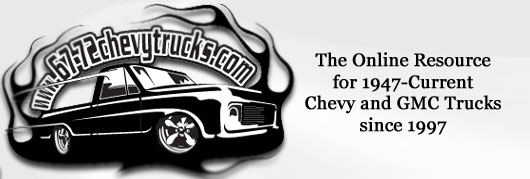
 |
|
|
|
|
#1 |
|
Registered User
Join Date: Nov 2013
Location: Show Low, Arizona
Posts: 797
|
Re: Cab corners
Overlapped joints is just looking for trouble., Joints should be butt welded. If you don't the repair will telegraph through the paint, and it will certainly rust a lot quicker at the repair
Having a back up strip may not produce the finished product you want. The metal is going to shrink when you weld it. and to get it back to contour you are going to have to planish the weld to stretch the metal back out. This is going to be pretty hard to do with a backup strip in the way Trim the patch panel first then use a sharp scribe to transfer the joint onto the old truck sheet metal. Cut to the scribe line with a cutoff wheel in a die grinder. Make adjustments with a sanding disk on the die grinder and make the final fit with a file. The more perfect the joint, the less metalwork you'll have to do. Even if you are very experienced, cutting with tin snips will distort the metal causing it to curl at the edge. Cutting the two panels together ensures that you are off at least the kerf width of the cutoff blade. Do a precise scribe off of the patch panel and cut the metal square with a wheel. Grind and file to fit. Sneak up on the fit and take your time. The time it takes to make a near perfect fit, weld it and metal finish it is less than all the metalworking it takes to get a sloppy fitting joint to look ok with metalwork. If you gas or tig the joint and have proper tacks, you can pretty much weld continuous bead, the weld that is proud of the metal will be easy to grind flush and there will be less work to planish the weld. |
|
|

|
|
|
#2 |
|
Registered User
Join Date: Dec 2000
Location: Boise, Idaho
Posts: 6,043
|
Re: Cab corners
Butt weld:
The BEST way to do it. Overlap weld: The "bestest" way to do it, if done properly. The old story on it being a breeding ground for rust, I am sorry, it hit me one day EVERY CAR MADE from the mid thirties, EVERY SINGLE CAR IN THE WORLD is TOTALLY constructed with "lap" welds, The ENTIRE BODY on EVERY CAR! These trucks, the ENTIRE thing is made of lap welds, what's one more going to hurt? As long as it's done properly, and sealed properly, it will never be an issue. There are places where they shouldn't be used, like across a huge panel. But on these corners, it's pretty straight forward. Brian
__________________
1948 Chevy pickup Chopped, Sectioned, 1953 Corvette 235 powered. Once was even 401 Buick mid engined with the carburetor right between the seats! Bought with paper route money in 1973 when I was 15. "Fan of most anything that moves human beings" Last edited by MARTINSR; 08-08-2018 at 12:54 PM. |
|
|

|
|
|
#3 | |
|
Registered User
Join Date: Dec 2000
Location: Boise, Idaho
Posts: 6,043
|
Re: Cab corners
Quote:
And I have to apologize, I am not attacking what you have said, it's all good info. I am just tossing out something here. On the tin snips, using "offset" tin snips doesn't distort the metal. I use them all the time fitting pieces to butt welding near perfection. Now I can't emphasize enough, I am not master metal worker who metal finishes something off to perfection without filler. I have, I have the ability to pull it off on easy stuff, I understand it. But I am not that guy, but I do get stuff done like a lot of guys can without those awesome skills. Just keeping it real for the most part, what you have laid out there is all good stuff to make something perfect, I am just laying info out there for the guy who hasn't got all the tools and years of skills to get something done. Brian
__________________
1948 Chevy pickup Chopped, Sectioned, 1953 Corvette 235 powered. Once was even 401 Buick mid engined with the carburetor right between the seats! Bought with paper route money in 1973 when I was 15. "Fan of most anything that moves human beings" |
|
|
|

|
 |
| Bookmarks |
|
|